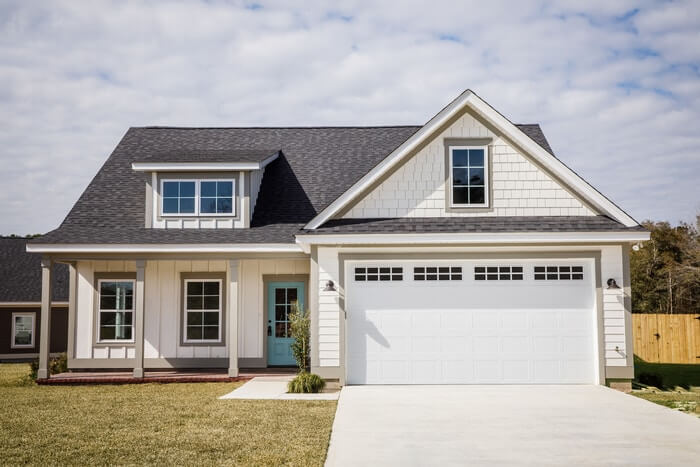Are you doing a siding project?
Modernize can pair you with three to four pros in your area, so you can compare options and save time and money.
Are you looking for a way to finance your upcoming siding project? Whether you need an emergency repair or want to enhance your home’s value, financing can be an effective way to complete the project. At Modernize, we frequently discuss home improvement plans with homeowners, and our recent interviews revealed that more than 50 percent of homeowners plan to finance up to 50 percent of their siding project costs. With many financing options available, it’s crucial to compare each one to determine the best fit for your budget and financial goals.

Key Factors to Consider When Comparing Siding Financing Options
When exploring your options, you should evaluate how each financing method impacts your monthly budget and long-term financial objectives. Here are the key aspects to consider:
1. Loan Term
The term of your loan refers to its length, impacting both your monthly payments and the total interest you pay.
- Longer Terms: Typically mean smaller monthly payments but result in higher total interest paid over time.
- Shorter Terms: Lead to higher monthly payments but reduce the total interest you pay, allowing you to pay off the debt faster.
Note: Credit cards, while a form of financing, differ from traditional loans as they do not have a set term. With credit cards, minimum payments may lead to never fully paying off your balance, unlike a loan where making regular payments will eliminate the debt by the end of the term.
2. Interest Rate
Interest rates play a vital role in determining how much you pay for the loan over time. Your rate will depend on several factors, including your credit score, financial history, and the lender.
- Factors Influencing Interest Rates:
- Your credit score
- The financial institution (e.g., banks versus credit unions)
- Your financial profile (income stability)
Tip: It’s wise to request soft credit checks from potential lenders to compare interest rates without affecting your credit score. This comparison can help you make an informed decision before committing to a lender.
3. Fees Associated with Financing
Be sure to review the fine print of any financing offer to identify potential fees. Some fees can be avoided by adhering to the terms of the agreement, while others may be mandatory.
Common Fees:
- Origination Fee: A one-time fee charged at the beginning of the loan. Not all lenders charge this, so it’s important to ask.
- Late Payment Fee: Imposed when a payment is missed, though some lenders may offer grace periods.
- Early Repayment Fee: This may apply if you pay off your loan before the agreed term. Always confirm this before signing the agreement.
Fees can add up quickly, so understand the full cost before moving forward.
Find the Right Contractor for Your Siding Project
Whether you’re ready to begin your project now or need some expert advice, our network of contractors are here to help. With a few simple questions, we’ll find the best local professionals for you
4. Type of Debt
Understanding the type of debt associated with each financing option can impact your financial future.
Revolving Debt:
- Definition: Typically offered by credit card companies, allowing you to borrow up to your credit limit and repay as you go.
- Pros:
- Flexible borrowing
- No fixed end date as long as you don’t reach your limit
- Cons:
- High interest rates and changing fees
- Late payments can harm your credit score
Installment Debt:
- Definition: A loan repaid in equal monthly installments, including interest.
- Pros:
- Structured repayment schedule
- Fixed monthly payments make budgeting easier
- Cons:
- Failure to make payments can result in fees and credit score damage
- May not qualify for advertised rates
Carefully evaluate these debt types to understand how they align with your financial health.
5. Monthly Payments
Your monthly payment should be affordable within your budget. Comparing monthly payments across different options can help you find the best fit.
Key Points:
- Longer loan terms often result in lower monthly payments but higher overall interest.
- Credit cards might have lower minimum payments, but you could be paying mainly interest without reducing the principal.
6. Extra Benefits
Some lenders provide additional perks that may influence your decision:
- Interest Rate Discounts: Offered for membership at specific banks or credit unions.
- Auto-Pay Discounts: Reduced rates for setting up automatic payments.
- Cash Back or Rewards: Some credit cards offer rewards for purchases, which can be appealing for smaller projects.
How Should You Be Financing Your Siding Project?
From personal loans to government grants, strict budgeting, or even a second mortgage, there are many ways to finance your siding project. Each option comes with unique terms, interest rates, fees, and repayment schedules. By understanding the pros and cons of each, you can make an informed decision that aligns with your financial goals and ensures you get the most value for your investment.
Find the Right Contractor for Your Siding Project
Whether you’re ready to begin your project now or need some expert advice, our network of contractors are here to help. With a few simple questions, we’ll find the best local professionals for you
Reviews from Real Homeowners
Welcome to Homeowner Resources! We are the Modernize blog. Modernize pairs more than 3 million homeowners a year with pre-vetted contractors in their area. This blog started because we believe homeowners should know everything about their homes, from how their HVAC works to which front door colors they might love. On Homeowner Resources, you can find information on every part of your home, right down to how you can negotiate with contractors to get the best price. Here's more about the blog.
Need a contractor? Learn more about how Modernize finds the right pro for you.




